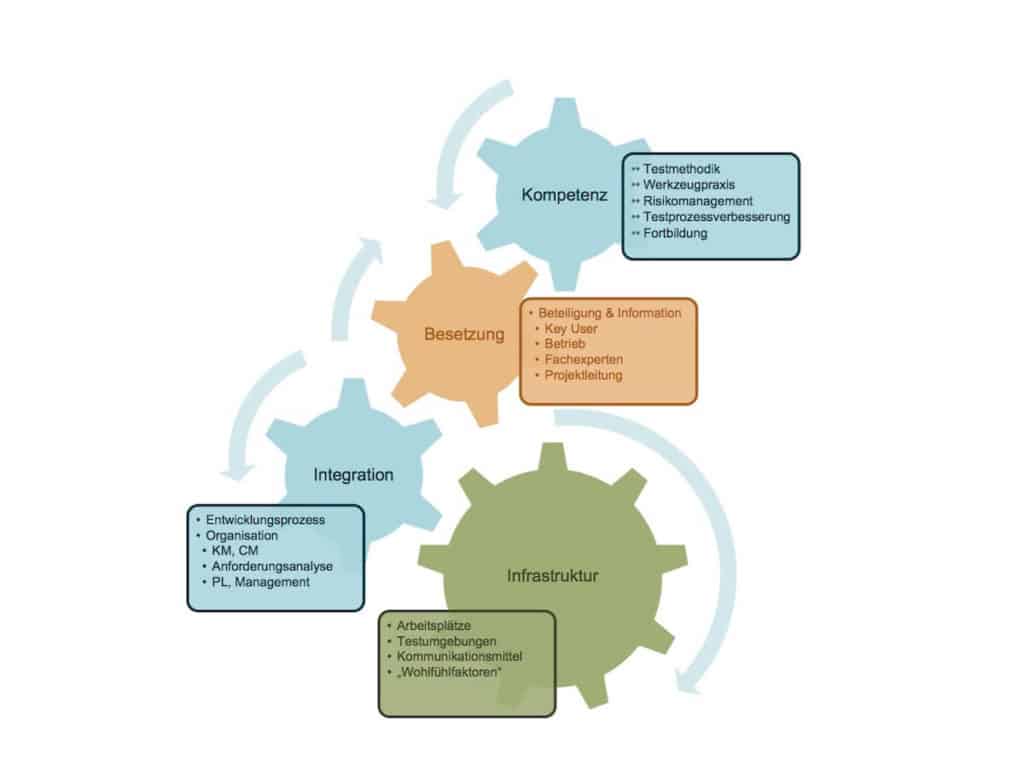Errors in productive operation are expensive, but so is software testing. Therefore, the efficiency of software testing in the project is of particular importance. This efficiency depends on various factors, including:
- Optimal test depth and test strategy
- Reusability of resources
- Targeted regression testing
However, our project experience shows that these opportunities are not sufficiently taken advantage of in many companies. Test projects are distributed throughout the company and test processes are set up anew each time. Existing tools are not used and sensible automation is not applied.
So there is no question of efficient software testing.
One way to address these problems and increase efficiency in software testing and even for all projects in the company is to consolidate testing activities in an internal or external test center. This generally pursues the following goals:
- The support of the project management through a comprehensible presentation of the quality
- An independent quality assessment
- The expansion and bundling of testing know-how
Success factors
For the successful introduction of a test center, the analysis of the corporate environment and careful planning are mandatory prerequisites. Four factors have a particularly strong influence on the success of the test center:

The competence
The development and bundling of test-relevant competences, such as test methodology, tool practice, risk management and test process improvement, supplemented by relevant know-how from the specialist area, forms the basis for the design of effective tests.
The cast
Both the involvement of all parties involved (key users, operations, subject matter experts, etc.) and the provision of sufficient information to those responsible for the project (project management, client, etc.) are essential for the acceptance of the test center's activities within the company.
The infrastructure
In addition to workstations, their equipment and the test environments, communication tools and "feel-good factors" are important aspects when designing a test center.
The integration
The success of a test center depends to a large extent on the integration of the activities into the development processes, but also into the overall organization (configuration, change, and defect management, requirements analysis, etc.). Interfaces must be clearly defined. In addition, the activities and results of the test center must be transparent and traceable for everyone in the project or the organization.
Conclusion
The successful establishment of a test center not only makes testing more efficient, but also benefits all project participants with the standardized processes:
- For project management, test projects are easier to plan and set up and more transparent to track. Testing is more cost-effective, since tools, experience, processes and infrastructure do not have to be provided anew each time. Quality becomes plannable.
- The operation assumes a safe, reliable and stable system, as it has been tested according to agreed standards with regard to the target platform.
- The specialist department and the key users are involved in the development at an early stage and therefore receive software that provides all the required functionalities and is usable and performant. As part of the test team, the users already know the new system before its introduction.
